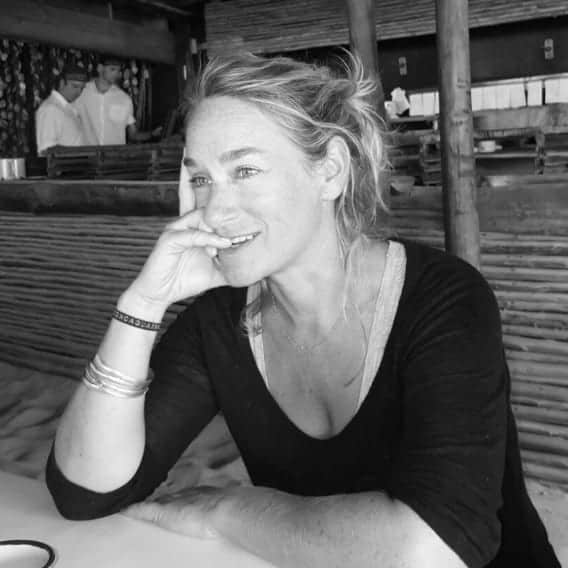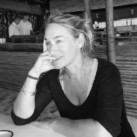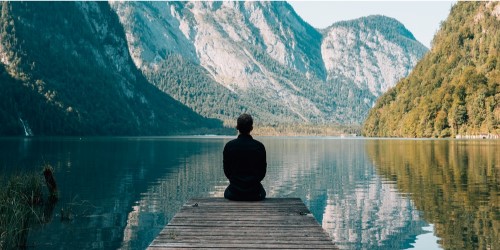
MysticMag meets Shannon Bryson, Creator of Wild Breath.
Shannon Bryson is a self-discovery guide, breathwork facilitator, and creator of Wild Breath—a powerful method blending structure and intuition to support people ready for a life reset. A mom, explorer, and forever student, Shannon brings heart, humor, and wisdom to her work, helping burned-out individuals reconnect with their intuition, rebuild confidence, and step into their next chapter with clarity and purpose.
Shannon, can you share your journey into breathwork and how it transformed your life, particularly during the transition in your mid-40s?
In my mid-forties, I found myself entering a new season of life. My kids were grown, I was recently divorced, and I was beginning my menopause journey. Along with all those transitions, I noticed a shift in my sense of self. Without the familiar roles of being a wife or a hands-on, everyday mom, I started to feel a bit untethered. Yes, I was a hairdresser and a business owner—but beneath all those titles, I realized I wasn’t entirely sure who I was anymore.
At the same time, I was living with constant, unrecognized anxiety. My system was always in overdrive. As a Manifesting Generator, I’ve always had high energy and a tendency to juggle a lot at once. I assumed that was just “how I was”—always buzzing, always on. But what I came to understand later was that I was actually living in a state of chronic stress. That low-grade hum of anxiety had been there for so long, I didn’t even know what it felt like to live without it.
I discovered meditation early on, but struggled to keep up a consistent practice. I felt like I was doing it “wrong”—thinking too much, not being able to quiet my mind. Like so many others, I got caught in the idea that meditation had to look a certain way, and if I couldn’t get there, I just wasn’t cut out for it.
Then I found breathwork—and everything changed.
Breathwork gave me something tangible, a physical anchor that helped me stay present. After years of struggling with traditional meditation, breathwork allowed me to build a consistent practice. And over the last year, something truly transformative happened: I began combining breathwork with meditation. This combination became a gateway to deep nervous system healing. It shifted my sleep, my health, my relationships—everything.
For the first time, I understood what it felt like not to be anxious. I remember the moment so clearly: no more buzzing in my ears, no constant hum under my skin. I thought, Oh… this must be what a regulated nervous system feels like.
I fell in love with breathwork so much that I started casually sharing it with others. My first certification was useful—I learned the mechanics—but it felt a bit intense and forceful. It leaned into a more masculine, “go hard or go home” approach, which didn’t sit right with me. It felt almost irresponsible, especially for people with trauma or sensitive systems.
So I pursued a second, longer certification that was trauma-informed and rooted in a more compassionate methodology. It taught me to slow down, to meet people exactly where they are, and to create daily, sustainable practices—not just peak experiences at a retreat.
This more intuitive, softer approach—blending breathwork and meditation—completely changed my life. Naturally, I wanted to share it.
I also run retreats, and through that journey, I began integrating mindful movement. I used to approach fitness with a “no pain, no gain” mentality—very intense, very rigid. But breathwork taught me to listen to my body. I still value health and strength, but I’ve shifted toward more walking, more restorative yoga, and a gentler rhythm overall. I’ve learned to honor when I need yin energy, and when I need yang. It’s no longer about pushing—it’s about tuning in.
Perhaps the biggest shift of all? I let it be fun. Personal growth doesn’t have to be so heavy. Yes, it’s meaningful and transformative, but it can also be light, joyful, and even playful. That was a revelation for me.
That’s how my program began—by offering others a diverse toolbox of practices. Not everyone will need the exact tools I do, but they can pick what resonates and build their own version. My intention is to help people reconnect with their intuition, expand their spirituality, and trust themselves again—while also having fun along the way.
What inspired you to create the Wild Breath technique, and how does it differ from other breathwork practices?
One thing I’ve always been clear about is that this work is not one-size-fits-all. That’s why I created a space where people don’t have to follow my way—I simply help them discover their way. I see myself as more of a guide than a guru, someone who helps others develop a personalized practice that aligns with their unique rhythm and needs.
When I first started teaching breathwork, I noticed that while people were intrigued, many weren’t integrating it into a daily routine. It wasn’t sticking. That’s when I realized something important: people were more familiar with the structure of daily meditation, but breathwork often felt a little too “out there” or wild without a container. So I began to refine and combine the two—integrating the grounded framework of breathwork with the deeply intuitive, inward-focused nature of meditation, Wild Breath was born,That’s when things truly started to shift.
The program I’ve developed isn’t a rigid protocol. Instead, it’s designed to empower people to craft a practice that feels like their own. I do offer one-on-one sessions to support people in creating this, but I also strongly encourage participation in community. There’s a powerful group component to this work—a shared space for connection, reflection, and support.
What really inspired me was seeing how many people, including myself, were relying on apps for guided meditations. And don’t get me wrong—they’re wonderful tools! But I wanted to go deeper. I wanted to support people in developing a direct practice—one that didn’t depend on external cues, or require them to be told what to focus on that day, whether it was self-love or gratitude. Instead, I wanted to help people create space to follow their own inner landscape, wherever their breath and spirit led them in that moment.
The ultimate goal is to cultivate a kind of self-sufficiency—not isolation, but inner sovereignty. To be able to sit with oneself, breathe, listen, and be guided from within.
And yet, even in that personal depth, I wanted to make sure no one felt alone. Community has become such a vital part of what I offer—spaces where people can connect, reflect, share, and simply be with others on similar paths. There’s something incredibly healing about doing this work in community: going deeper within, moving slower, becoming more intentional and efficient—all while being held in a circle of support.
That’s the heart of what I offer: not just tools, but a toolbox. Not just practices, but permission—to explore, to play, to rest, and to find your own rhythm, with others walking beside you.
What are some common challenges your clients face when starting breathwork, and how do you support them in overcoming these obstacles?
When people first come to me, they’re often standing at a threshold. Many are navigating a major life transition—maybe their children have left home, a relationship has ended, they’ve changed careers, or they’re moving through the powerful shift of menopause. With these external changes comes something more subtle: identity confusion. They’re no longer who they were, but aren’t quite sure who they’re becoming.
This is where our work begins.
Through a combination of breathwork, meditation, and community, I help clients reconnect with their authentic self. These practices cultivate self-awareness and offer more than just tools—they provide a mirror. A way of seeing themselves clearly beyond the roles they’ve played.
Another common thread I see is hidden or unrecognized anxiety. So many people have been living in a constant state of nervous system activation for so long that they’ve come to believe it’s just their personality. “I’m just high-strung.” “I’ve always been this way.” But what they’re really experiencing is chronic dysregulation. I weave specific breath and meditation patterns into our sessions that help calm the nervous system and build an awareness of early signs of stress. This helps them gently return to their body and use it as an anchor, so presence becomes a choice rather than a struggle.
And then there’s the longing for true community. Many of my clients find that their existing social circles no longer reflect who they are becoming. They feel unseen, disconnected. But when they come into this space—raw, real, and ready—they meet others doing the same. Whether in retreats or group programs, people connect at a depth that’s immediate and genuine. I’ve seen it again and again: in just a few days, strangers become soul family. Because we meet one another not as roles, but as truth.
Lastly, there’s a pattern I notice in how people approach transformation—they tend to overthink it. Many carry the belief that personal growth has to be heavy, serious, even dogmatic. My approach gently disrupts that. I infuse lightness and playfulness into everything I do, because I believe spirituality should be sustainable, and joy is an essential part of growth. When we allow room for humor, spontaneity, and curiosity, transformation becomes not just possible—it becomes delightful.
So whether you’re seeking clarity, calm, connection, or just a breath of fresh air on your journey, this space is here for you.
How important is community in your programs, and what role does it play in the personal growth and transformation of your clients?
One of the most powerful aspects of the retreats I offer—and even in my online group programs—is that no one knows who you’ve been. You don’t have to show up as someone’s mother, wife, business owner, or caregiver. You don’t have to hold it all together. From the moment you arrive, I invite you to take off the hats you wear in your day-to-day life and just be—as you are, now.
You get to meet yourself freshly.
There’s something so liberating about stepping into a space where nobody expects anything from you. You get to choose what you share. You get to remember who you are, beyond the roles and responsibilities. That’s why community is such an essential part of this work—because when we’re witnessed by others in our raw, true form, something deep clicks into place.
At Wild Breath gatherings, whether it’s online or in person, we laugh hard, cry deeply, balance our nervous systems, share meals, and hold space for each other’s a-ha moments and quiet revelations. There’s something sacred about that full range of expression—tears and hugs and belly laughs all in the same breath. It’s healing, it’s real, and it’s joyful.
My work is rooted in love and connection—those are my guiding values—and I love connecting people to themselves and to each other. Yes, the one-on-one work I offer is powerful and deeply personal, and I also believe we’re not meant to do it all alone. Growth doesn’t need to be solitary. Transformation becomes richer, more lasting, when we can share the journey and reflect each other’s light back.
But one thing I also feel strongly about is empowering people to not become dependent on me, or any outside source, for their healing. I teach practices that help you create your own relationship with breath, body, and presence—so you’re not just following along, but learning how to lead yourself.
Right now, all of my retreats and group programs are for women only. It’s not because I think men aren’t welcome in this work—it’s because I teach from lived experience, and this lifetime, I’ve walked as a woman. That’s the perspective I know. And honestly? The all-women spaces have consistently created the deepest, most vulnerable openings. When I once tried offering a coed retreat, it didn’t fill. The feedback I heard was clear: “I don’t want to bring my husband. I love that it’s just women.” There’s something unique that happens when women gather together—we soften, we open, we remember.
So, for now, I continue to hold space for women who are ready to return to themselves. Women in transition. Women who are seeking something more. Women who are tired of doing it all alone.
If that’s you, you’re not alone anymore. This is your space to arrive as you are.
What are your future goals for Wild Breath, and how do you envision expanding your reach and impact in the coming years?
I’m always offering retreats—both local and international—and each one is crafted to meet you exactly where you are on your journey.
My local weekend retreats in Southern California are deep and transformational. These are workshop-style gatherings focused on inner work—release, integration, breathwork, stillness, and meaningful movement. These retreats are powerful containers for healing, self-discovery, and realignment.
Then there are the international retreats—we’ve gone to different destinations in South America and our first overseas retreat was in Greece last year, and we’re headed to Portugal next. These are about expansion and joy. Yes, we still reflect, breathe, and drop into stillness—but we also immerse ourselves in culture, community, and soul-nourishing experiences. They’re designed to help you build your personal practice and then return home with something lasting. Something that lives on in you.
After years of offering a variety of programs and workshops, I realized something simple and powerful: when people have a consistent practice that connects breath and meditation, so much else naturally begins to shift.
So I created the Wild Breath Meditation Technique—a fusion of breathwork and Effortless Meditation designed to help you return to yourself, again and again.
I’ve streamlined all my offerings into this one potent practice, because I believe when we go deep with something, it becomes more transformative. Instead of scattering energy across different tools and techniques, we ground it. We anchor it. And from that place, real, lasting change begins.
Here’s something a little unexpected: after 35 years behind the chair, I nearly walked away from hair. I’d started to feel disconnected—like the salon wasn’t reflecting who I had become. But what I realized was, it wasn’t the craft I was done with—it was the shallowness of the experience.
People were sitting in the chair scrolling on their phones, flipping through gossip mags, venting about their day—and it hit me. We could be using this time so much more meaningfully.
So I opened Wild Roots Lounge, a Hair and Wellness Lounge that blends hair artistry with healing. Yes, you can come for a cut, color, or extensions—but you can also experience:
- Breathwork while at the shampoo bowl,
- Meditation while your hair processes
- Sound baths during your conditioning treatment
It’s a full-body, full-soul reset. You walk out not just looking good on the outside, but feeling good—centered, grounded, and deeply cared for. The reception has been incredible. Some clients are even coming in just for the reset experience, regardless of where they get their hair done.
And this is just the beginning.
Through my Wild Breath Facilitator Certification Program, I train others to share this work—teaching breathwork, holding retreats, and guiding clients through profound transformation. My next evolution? Teaching salons how to shift their entire client experience into something deeper, more soulful, and truly restorative.
Self-care isn’t just about appearances. It’s about how we feel in our bodies, our hearts, our lives.
If you would like to find out more about Shannon Bryson, please visit https://www.shannonbrysonbreathwork.com/ or https://www.wildrootslounge.com/



